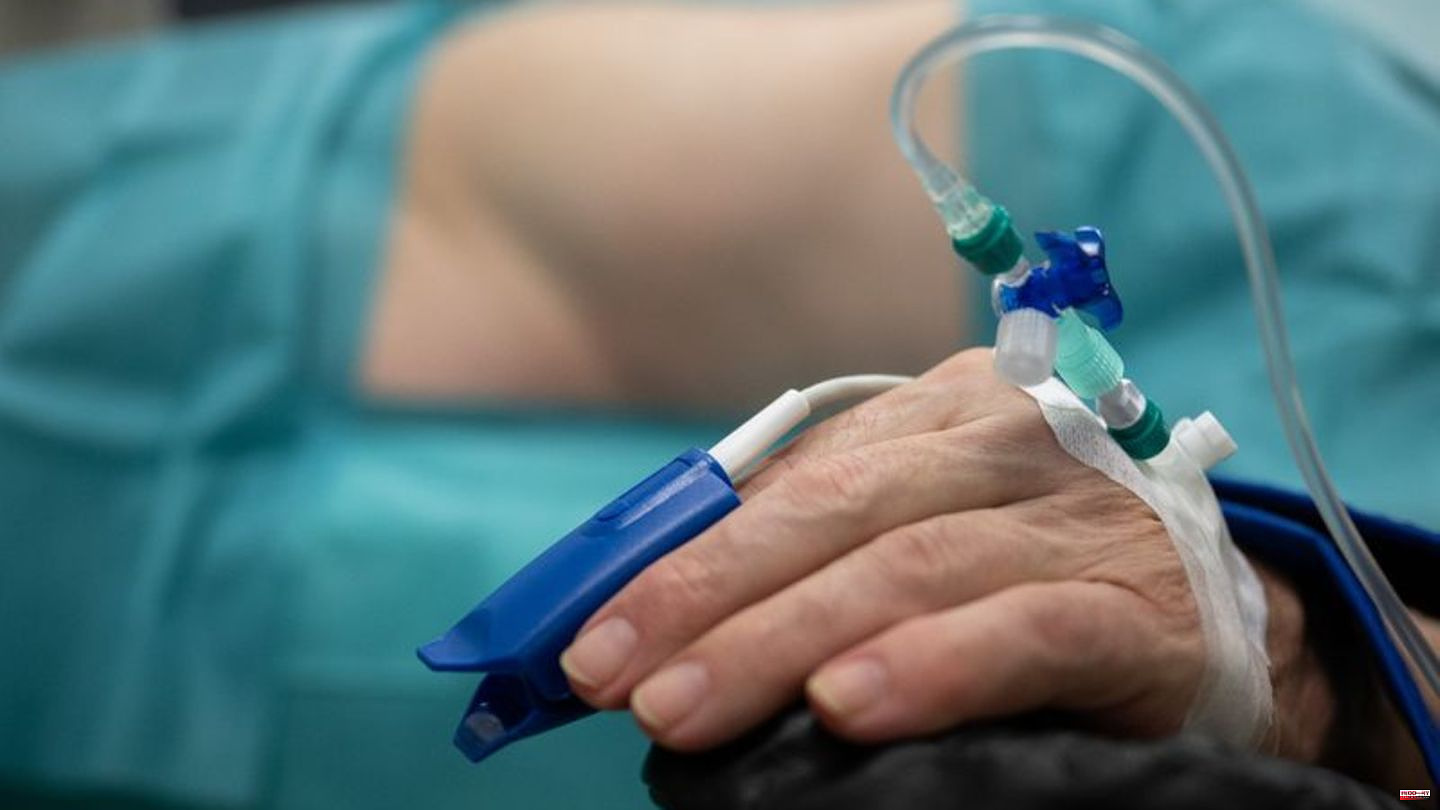The anesthetist slowly guides a needle through the abdominal wall with his right hand and a transducer with his left hand. On the screen next to the patient, he can see in the ultrasound in which layer of the abdominal wall the needle is located. In the third layer, just before the intestinal wall, runs the network of nerves that Thorsten Steinfeldt is targeting. The chief physician for anaesthesia, intensive care medicine and pain therapy at the professional association accident clinic (BGU) in Frankfurt is one of the leading experts in the field of regional anaesthesia.
An anesthetic is injected near nerves that transmit pain in a specific region of the body. With the patient on the operating table, part of the abdominal wall is to be "blocked," as Steinfeld explains. The surgeons will later remove a piece of the iliac crest in the region and reinsert it into the man's lower leg. With the help of the body's own transplant, the bone that is too thin above the ankle should grow back. Other parts of his body were numbed before the patient was anesthetized, such as his lower leg through a knee puncture.
Fit much faster
According to the German Society for Anaesthesiology and Intensive Care Medicine (DGAI), the advantages are particularly evident after the operation: "The patient wakes up more relaxed, complains less often of nausea, has less pain and is fit again more quickly," says DGAI Vice President Frank Wappler. Regional anesthesia is useful for many procedures. "We hope that these methods will be even more widespread."
According to the Federal Statistical Office, the number of operations in Germany in 2021 was around 16 million. According to the DGAI, there are no figures on what type of anesthesia was used. What is certain, however, is that a type of regional anesthesia is also used in parallel with a large number of general anesthetics, on the one hand to reduce pain and the need for painkillers during the operation and on the other hand to avoid pain after the operation.
Classically, there are three basic forms of anesthesia: general anesthesia (experts speak of general anesthesia), local anesthesia and regional anesthesia. In the first case, the patient receives a combination of sleeping pills and painkillers, among other things. According to Steinfeldt, the condition is more like an artificial coma than a deep sleep. With local anesthesia, only a small area, such as a finger, is numbed without affecting consciousness.
Not new to obstetrics
Regional anesthesia works both when you are awake and under general anesthesia. The procedure has been known under the term partial anesthesia for decades. It is most common in obstetrics. A local anesthetic is injected near the spinal cord to ease labor pain or allow for a caesarean section. So regional anesthesia is not new, "but it has evolved," as Steinfeldt says, especially in the past 15 years or so.
The prerequisite was the improvement of ultrasound technology. The anesthetist needs to see exactly where the needle is so they can target the nerves and not cause an injury next door. In the obese patient with the abdominal wall blockage, for example, he could misjudge the voluminous center of the body, inject too deeply and thereby pierce the intestinal wall.
"It's a relatively delicate procedure," says Wappler: "You have to be familiar with the anatomy, you have to be good at using the ultrasound device and you have to use the techniques regularly. You need time, patience and a sure instinct."
study still in progress
At the BGU Frankfurt, these skills are intensively promoted among young employees. According to the press office, this also makes the BGU interesting as an employer, there are - unlike in other clinics - no vacancies in anesthesia. Research is also being carried out at the same time, and a study on the measurable benefits of nerve blocks is in preparation.
Steinfeldt explains that if regional anesthesia is used in parallel with general anesthesia, it is possible to keep the anesthesia flatter. The patient also needs fewer painkillers during and after the operation. As a result, he wakes up faster, feels sick less often, and is disoriented for less time.
The so-called "delirium" is a not inconsiderable risk of anesthesia, especially in older, pre-existing patients, as a review study published in the "British Journal of Anesthesia" in 2020 showed. According to the study, postoperative delirium is "a relatively common and serious complication." It statistically increases the number of days spent in hospital by two to three days and the probability of dying in the next 30 days by seven to ten percent.












